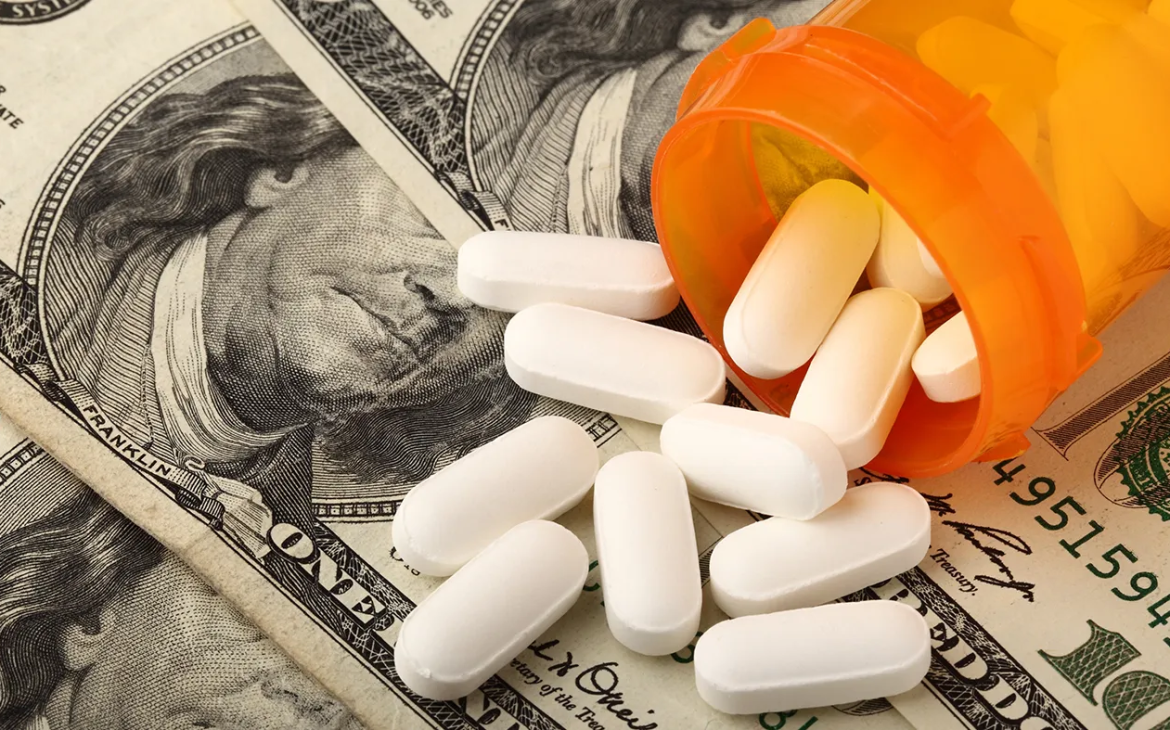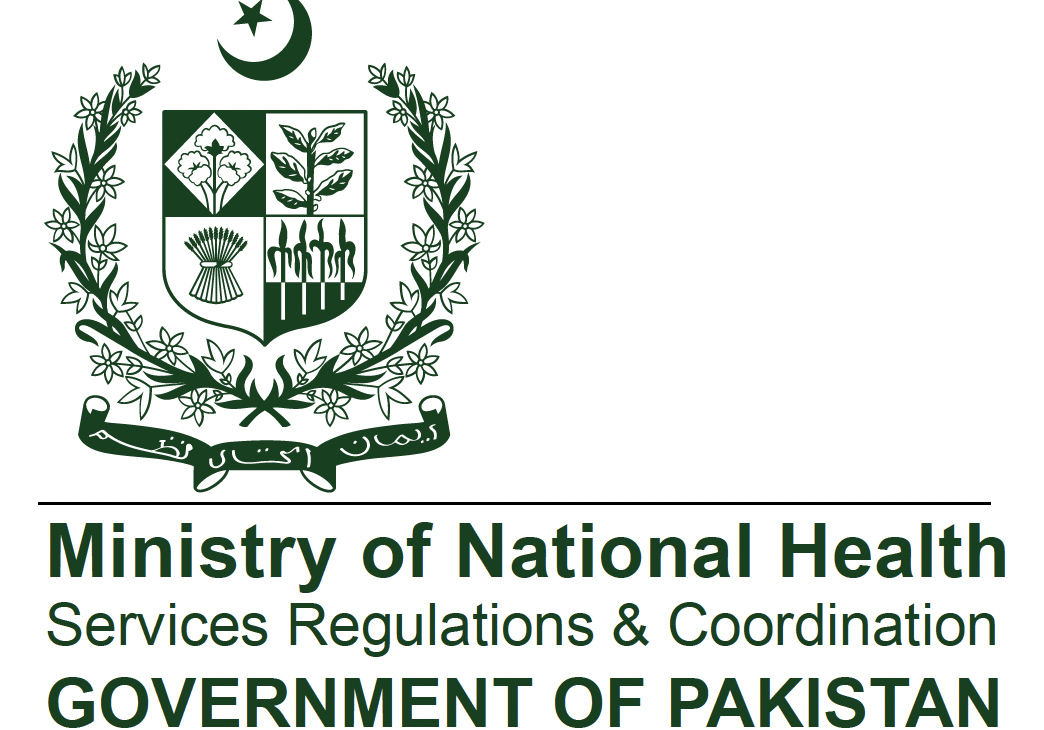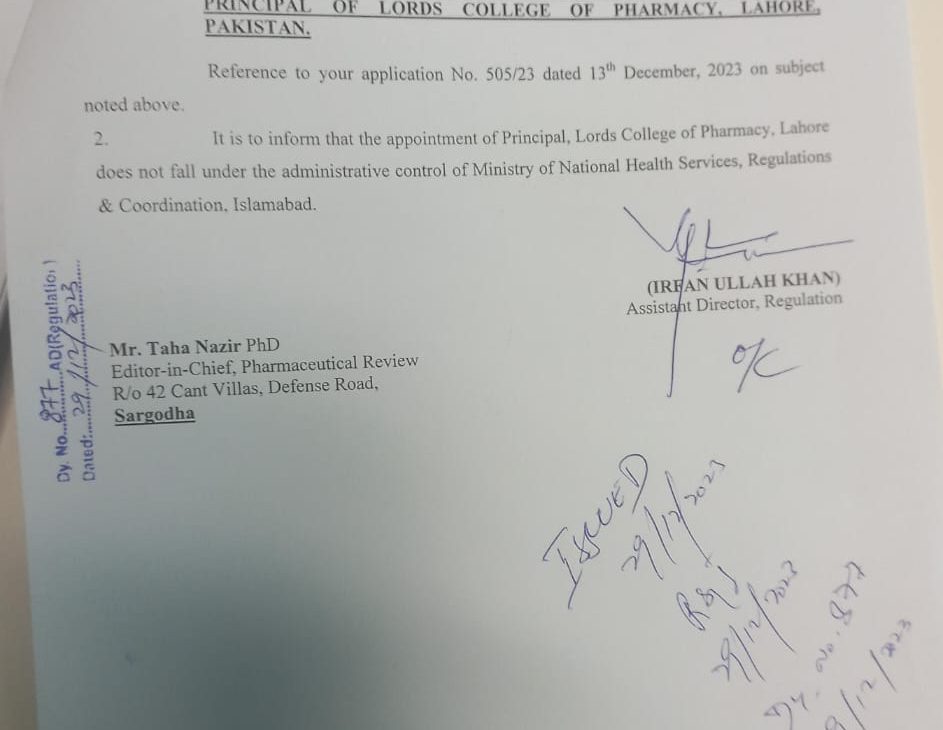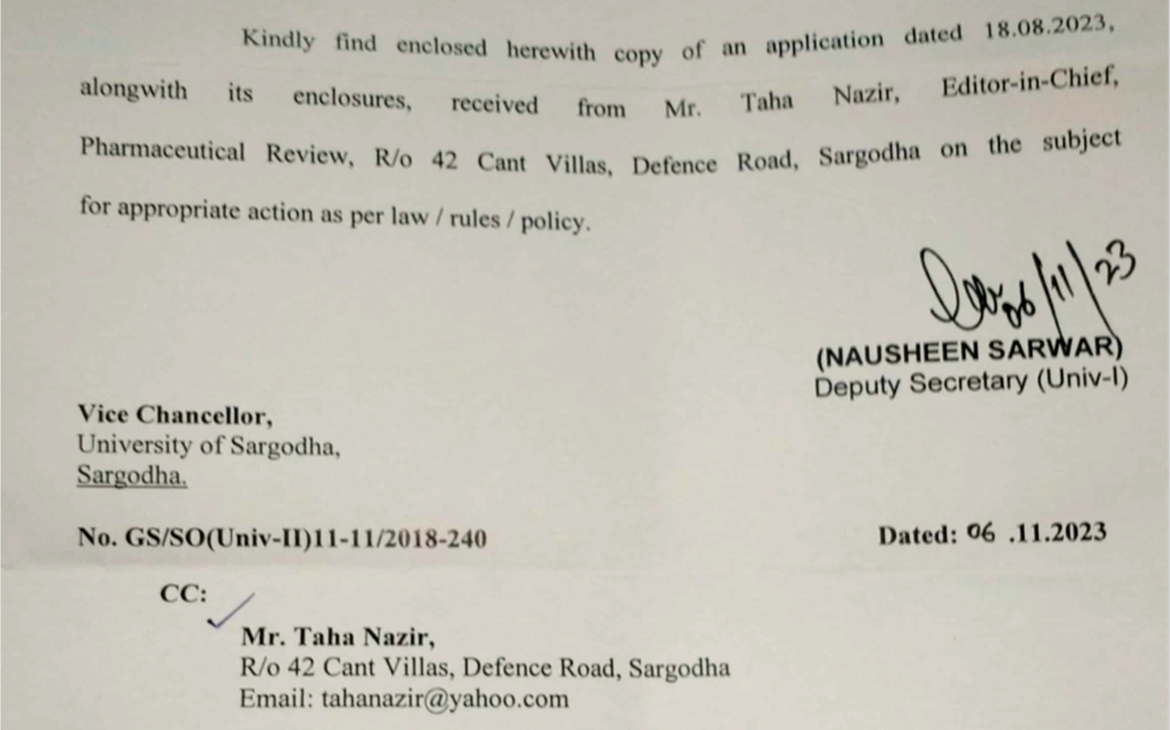
Pharmaceutical Review (Muhammad Usman) Islamabad: March 24 ,2024: The Young Pharmacists Association has highlighted the gang led by Drug Regulatory Authority of Pakistan (DRAP) chief, Asim Rauf, who, it noted in a letter addressed to prime minister , Shahbaz Sharif , connived with pharma industry to get de-controlled life- saving drugs . It claimed in the letter now available with the Prime Minister Office that de-controlling of drugs in Pakistan is like bombing the patients and their attendants to kill them in one go before their natural death.
The letter is as under,
“Respected Sir
Mr. Asim Rauf CEO, Mr. Amanullah Director Pricing, Mr. Ajmal Sohail, Mr. Sayyad Hussain, Mr. Fakhrudin Amer, Mr. Bilal Bin Akber of DRAP attacked directly on 250 million Pakistanis by removing mandatory control on medicine prices on 06 February 2024. The time and date of removing control on medicine prices was selected in such a wicked way that no hue and cry could be
listened by the high-ups of the country, as there were general elections on 08 February 2024.
Once removing control on medicine prices was proposed by the than Finance Minister Mr. Shaukat Aziz in March 2002, but Pakistan Young Pharmacist Association informed the than CEO Pakistan and President of Pakistan General Pervez Musharaf that market forces cannot determine the medicine prices in Pakistan, because in almost every commodity there is one person who has to
determine, whether I may buy or not. In purchasing medicines there are three different persons involved, who are:
- Client – Doctor
- Customer – Attendant of patient (patient’s son/ father/ mother/ husband/ brother/ sister/ daughter etc)
- Consumer – Patient
Unluckily, 999 out of 1000 doctors are not prescribing medicines and diagnostic tests on real disease based; rather prescription is based on the volume of bribe paid by Pharmaceutical Companies and Diagnostic Laboratories to doctors; which is a homicidal crime. As per amount of the bribe, the prescription becomes heavier. Extreme sadly, if the prices of medicines were increase, then consumption of medicines would increase. Doctors are always happy on medicine price increase; herein “grater the medicine prices richer the doctors”; “increase in medicine sales richer the doctors”.

Pharmaceutical companies are profit making organizations, they do not believe on charity. How we can assume that pharma companies would reduce their profits or business. On the other hand, our regulator of medicines i.e. officials of Drug Regulatory Authority of Pakistan are extremely corrupt, which is favorable for profit making pharma companies. Pharmaceutical Companies by
lobbing always get key appointments of DRAP (Drug Regulatory Authority of Pakistan) to most corrupt officials. Mr. Asim Rauf CEO, Mr. Amanullah Director Pricing, Mr. Sayyad Hussain, Mr. Ajmal Sohail, Mr. Fakhrudin Amer, Mr. Bilal Bin Akber are the most corrupt officials of DRAP; and always made and executed anti-Pakistan, anti-patient policies. They made and executed policies, which increases profits of Pharmaceutical Companies; more over they increased the import bill of medicines and also encouraged Transfer Pricing (money laundering). The above officials were making their utmost efforts for five years to remove control on medicine prices, and remained successful on 6th February 2024, when our esteemed Establishment and Cabinet were busy
in General Elections and Law enforcement in the Country.
DRAP has registered such medicines in Pakistan, which were already banned e.g. Panadol Extend 665mg; and gave approval of its advertisement on mass media; moreover Panadol 500mg was removed from market for two years to convert patients on Panadol Extent 665mg. DRAP has introduced a nefarious way to loot poor patients by enlistment of medicines without fixing prices. DRAP officials are regularly getting foreign tours from private Pharmaceutical Companies (which is direct bribe) resultantly import bill of medicines is increasing day by day.
After 18th amendment the medicine registration and pricing is the prerogative of provinces, DRAP is an unconstitutional organization. Since DRAP was established to supply of Quality Medicines at Economical Prices to Every Pakistani; whereby, DRAP has miserably failed to supply Quality Medicines and Economical Prices to Pakistani, hence medicine registration and pricing
may be given to Provinces as per Constitution of Islamic Republic of Pakistan.
Moreover removing the control on medicine prices and registration of banned medicines is extreme violation of Constitutional guarantees afforded to every citizen of Islamic Republic of Pakistan and grave violation of Drugs Act 1976 and violation of DRAP Act 2012Foreign tours of DRAP officials sponsored by private Pharmaceutical Companies and Transfer Pricing (money laundering) is anti-Pakistan activities of DRAP officials. It is famous that DRAP officials get huge bribes off shore, that is why DRAP officials encourage transfer pricing (money laundering) for smooth transaction of off shore bribe. It is also famous that huger than ever off shore bribe was given by Pharmaceutical Companies to Mr. Asim Rauf CEO, Mr. Amanullah Director Pricing, Mr. Ajmal Sohail,
Mr. Fakhrudin Amer, Mr. Bilal Bin Akber, Mr. Sayyad Hussain of DRAP for removing mandatory control on medicine prices.
Muslim League (N) and Peoples Party are always focused on welfare of poor patients and focused on free medicines in Government Hospitals. If medicine prices would increase by ten times on average then it would be almost impossible for the government to give free medicines at government hospitals.
Mr. Asim Rauf’s benami businesses:
- Factory M/s Zeta Pharma, 494 Sundar Industrial Estate, Lahore, Pakistan.
- M/s Zeta Pharma, 36 Al Sheikh Mohammed Al Nadi St., Off Mostafa El Nahaas St. 6th District. Nasr City, Cairo, Egyp.
- M/s Asto Life Sciences (Pvt) Ltd, Lahore, Pakistan.
- Capra-Med (Pvt) Ltd, First Floor, 81 Commercial Broadway, Paragon City, Barki Road, Lahore, Pakistan.

It is pertinent to mention here that Mr. Asim Rauf CEO DRAP is exercising all the powers of Federal Government (Federal Cabinet) since 07 March 2019 in grave violation of law conferred upon by DRAP Act 2012, Drugs Act 1976 and Constitution of Islamic Republic of Pakistan. Mr. Asim Rauf is getting salary Rs 1350000 per month along with other perks, which is not approved from
Ministry of Finance. Mr. Asim Rauf gave Rs 500 million bribe to the than Minister and Mrs. Farrah Gogi to become acting CEO DRAP in March 2019 and once again gave Rs 1 billion bribe to the than Minister and Mrs. Farrah Gogi to become regular CEO DRAP in February 2022; wherefrom, under section 5 of DRAP Act 2012, one can be appointed CEO for three years and acting CEO can be appointed for three months. If Mr. Asim Rauf were complete his tenure, he would be CEO for six years, which is grave violation of section 5 of DRAP Act 2012.
On the order of Prime Minister, an inquiry was held to determine, whether the promotion of Mr. Asim Rauf, Mr. Obaidullah and Mr. Fakhrudin Amer from BS-18 to BS-19 was lawful or otherwise. The inquiry concluded the promotions were illegal and inquiry recommended that all above officers must be reverted to BS-18 forthwith. Under the above circumstances, it is most respectfully prayed that declare the notification of removing control on medicine prices illegal, null and void; start a criminal prove against Mr. Asim Rauf CEO, Mr. Amanullah Director Pricing, Mr. Ajmal Sohail, Mr. Fakhrudin Amer, Mr. Sayyad Hussain, Mr. Bilal Bin Akber and probe all allegations level in this complaint against DRAP officials; and appoint honest officials in DRAP for the preferment of poor patients”.














